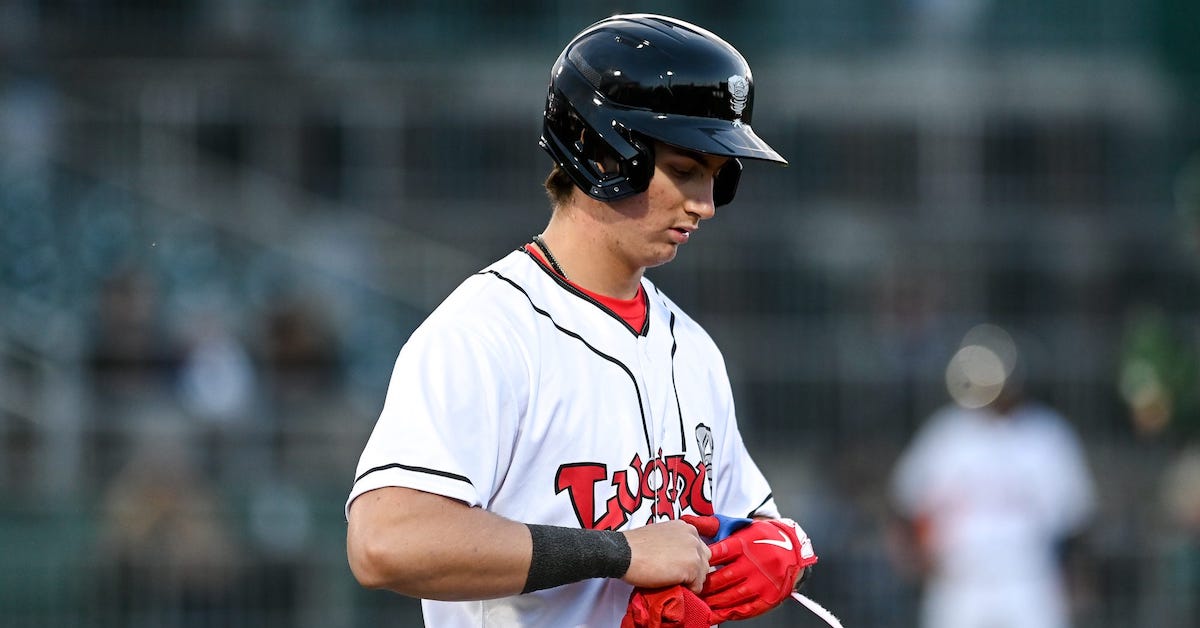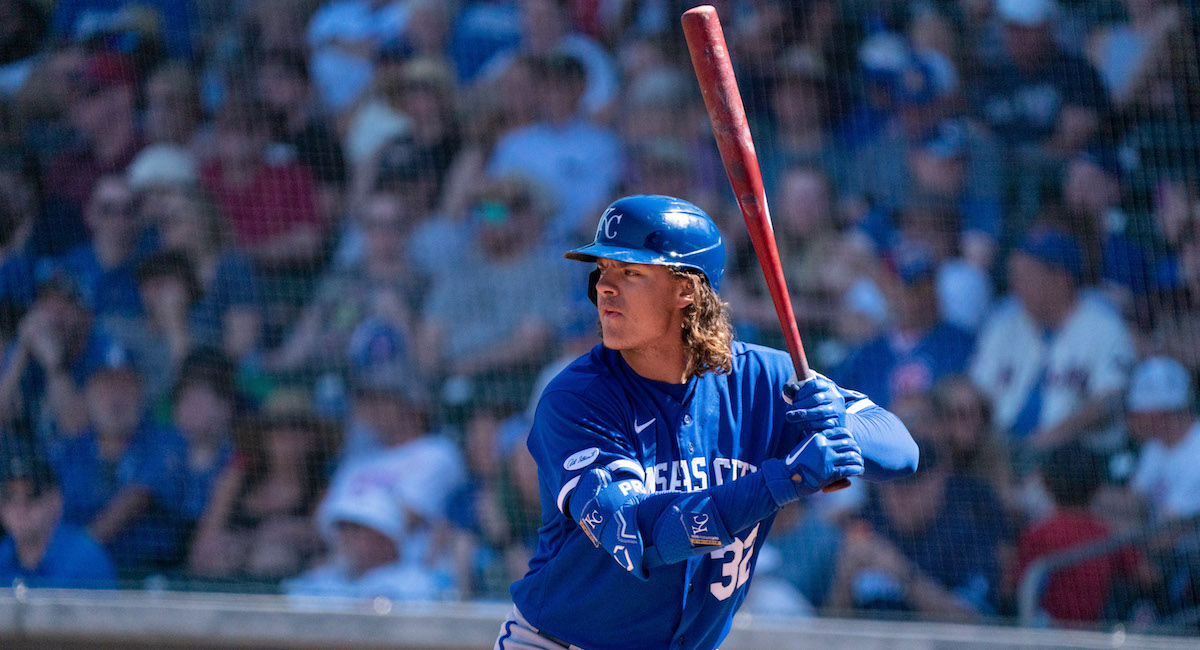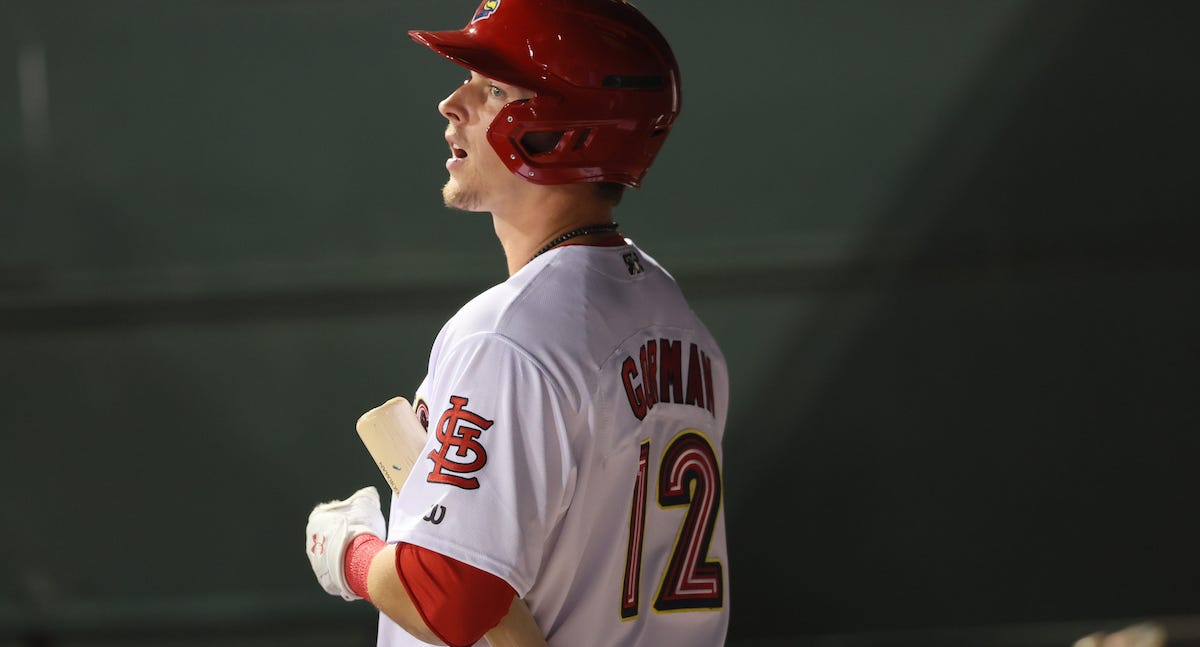Can Cristian Mena and Nick Nastrini Miss Bats in the Big Leagues?

There are certain stats that seem likely to always move in tandem. A high walk rate will, almost by definition, result in a high on-base percentage. A low whiff rate seems to naturally beget a high contact rate. But sometimes things don’t line up in the way intuition would dictate.
The other day I was perusing the minor league pitching leaderboards and when I sorted them by swinging strike rate, a crop of standouts topped the list, posting rates higher than 16% (the minor league average is around 12% for pitchers with at least 100 innings pitched). Curious, I re-ordered the list to see how these pitchers stacked up in terms of strikeout rate – a stat my brain assumed would result in a similar list of names, if slightly reordered. To my surprise, however, many of the top-ranked swinging-strike inducers skidded down the list when it was re-sorted by strikeout rate:
| Name | SwSt% | SwSt% Rank | K% | K% Rank |
|---|---|---|---|---|
| Drew Thorpe | 18.6 | 1 | 34.0 | 5 |
| Chih-Jung Liu | 16.8 | 2 | 28.6 | 43 |
| Cristian Mena | 16.1 | 3 | 27.2 | 76 |
| Nick Nastrini | 16.0 | 4 | 28.4 | 46 |
| Jose Corniell | 15.9 | 5 | 29.8 | 28 |
| Rafael Sanchez | 15.9 | 6 | 24.7 | 137 |
| Yoniel Curet | 15.6 | 7 | 33.3 | 7 |
| Carlos F. Rodriguez | 15.5 | 8 | 29.5 | 23 |
| Angel Bastardo | 15.5 | 9 | 29.4 | 24 |
| Felipe De La Cruz | 15.4 | 10 | 28.3 | 39 |
This caught me off guard, so I pulled up the major league leaderboards and repeated the same steps, first sorting by swinging strike rate, then by strikeout rate. At the major league level, no pitcher even falls out of the top 30, let alone tumbling as tremendously as some of the top bat-missers of the minor leagues:
| Name | SwSt% | SwSt% Rank | K% | K% Rank |
|---|---|---|---|---|
| Spencer Strider | 19.4 | 1 | 37.6 | 1 |
| Tyler Glasnow | 16.6 | 2 | 32.8 | 2 |
| Shane McClanahan | 15.6 | 3 | 25.8 | 27 |
| Blake Snell | 15.0 | 4 | 31.4 | 4 |
| Domingo Germán | 14.8 | 5 | 25.7 | 29 |
| Luis Castillo | 14.8 | 6 | 27.2 | 15 |
| Pablo López | 14.6 | 7 | 29.2 | 10 |
| Freddy Peralta | 14.5 | 8 | 31.2 | 5 |
| Joe Ryan | 14.1 | 9 | 29.2 | 9 |
| Jesús Luzardo | 14.0 | 10 | 28.0 | 12 |
It seems like the recipe that whips up minor league pitching success isn’t the same as the one that results in being a bat-missing major leaguer.
So, what gives?
Let’s start with the obvious. Perhaps the clearest difference between pitching in the minors and pitching in the majors is the caliber of the opponents. Specifically, it’s much more difficult to induce a swinging strike on a junky pitch when facing an advanced hitter than it is against a less-experienced minor leaguer. Thus, it stands to reason that in-zone swinging strike rate is a more reliable indicator of the sustainability of minor league results, as it diminishes the impact of a batter being duped. Testing this theory against the major league pitching leaderboard supports this idea, as the list of high-achievers stays relatively constant when sorted by in-zone contact rates.
That logic still holds true when we look to the minor league leaderboards. Indeed, of the 10 pitchers leading the minors in swinging strikes, only two (Drew Thorpe and Yoniel Curet) have in-zone swinging strike rates that are better than their overall mark in that column. And wouldn’t you know it, those are the only two pitchers who stay in the top 10 when the list is instead sorted by strikeout rate. The other three minor leaguers with overall swinging strike rates above 16% (Chih-Jung Liu, Cristian Mena, and Nick Nastrini) all have in-zone swinging strike rates that are lower than their overall swinging strike rates, and each of these pitchers falls by a few dozen spots when the list is re-ordered by K-rate. This illustrates the importance of missing bats in the zone, particularly when it comes to alchemizing whiffs into punchouts.
It also stands to reason that promotion to a higher minor league level would result in a dip in these types of pitching statistics. Assuming, as we do, that it’s easier to fool a Double-A hitter into offering at an unhittable breaking ball out of the zone than it is a Triple-A hitter, then promotion from one level to the next would presumably expose a pitcher’s reliance on chase swings as opposed to those precious in-zone whiffs. Lucky for us, two of the aforementioned pitchers – Nastrini and Mena – are not only in the same org and have virtually identical Double-A stats, but they also received simultaneous Triple-A promotions at the end of August. So, let’s take a look at how they compare and assess what their results might indicate about the sustainability of their minor league success.
Looking at how Nastrini and Mena performed on paper at Double-A makes them seem like virtually the same player. They’re both in the White Sox system, with similar stats in terms of swinging strikes, walks and strikeouts. They also feature the same arsenal – four-seamer, slider, curveball, changeup – and made their Triple-A debuts within a couple days of one another. But within those similarities, there are key distinctions between them that might alter our expectations of them.
Let’s start with how they ended up with the White Sox. Mena was signed for $250,000 out of the Dominican Republic in 2019, and while the start of his pro career was delayed by the pandemic, he was still just 18 when he took the mound for the first time in 2021. Having been largely untested before then, he quickly ascended through the org as part of Project Birmingham and is now the youngest pitcher to reach Triple-A this year. Conversely, Nastrini, who is several years older, was acquired mid-season as part of the Joe Kelly trade with the Dodgers and boasts a more robust track record than Mena, having been a fourth-round pick in 2021 out of UCLA.
In terms of statistics, their walk rates were identical at Double-A, each posting an unsavory 11.3% mark in that column. Their strikeout rates were similar to one another as well, each hovering above 25%, and their swinging strike rates differed by just .1%, with Nastrini’s coming in at 16.5%, and Mena’s at 16.6%. But before we chalk up those similarities to these guys being the same pitcher in different fonts, let’s investigate how they’re producing these numbers and see what we might expect from each going forward.
While Nastrini and Mena feature the same pitch mix, they use their arsenals in very different ways. Mena has long boasted an impeccable ability to spin his curveball, to the point that he’s been tasked with building his arsenal around that pitch. Since turning pro, he’s worked on adding a slider to his mix, and while it’s developed a slightly more distinct shape this season (tighter, with more horizontal action), it still blurs with his curveball, with both pitches acting in similar ways to miss bats on offerings out of the strike zone.
While Nastrini’s breaking balls don’t cause jaws to drop the way Mena’s curveball has throughout his career, their shapes are much more distinct from one another, and there’s roughly 7 mph of velocity separation between them.
Both pitchers throw a changeup between 13-14% of the time, and both favor the cambio against lefties. Nastrini’s changeup has a sharp shape to it, with its velocity and arm-side movement geared at mirroring the movement of his slider, allowing the changeup to work against lefties the way that his slider works against righties.
Mena’s changeup is also most effective when he’s able to play it off of the shape of his slider, in the hopes of getting lefties to flail at it off the plate. Unfortunately, his changeup is much faster than the slider, flirting with 90 mph, and its shape doesn’t feature much horizontal action.
Meanwhile, Mena’s fastball has lost some of its ride, as well as a tick or two of velocity, so it tends to hover in the 91-92 mph band, and without the bat-missing ride, its shape and velocity are too similar to those of the changeup for either pitch to be a reliable in-zone bat-misser.
As a result, Mena’s lukewarm heater has been frighteningly hittable this season, contributing to a very high home run rate for the young hurler. Nastrini’s four-seamer, on the other hand, has been much more successful, with a flatter, more deceptive shape. It’s thrown from a release point that’s more difficult to pick up due to Nastrini’s setup towards the third base side of the rubber. His fastball has maintained a higher average velocity, eliciting significantly more swinging strikes and a more anemic resulting slash line than that induced by Mena’s heater. This in turn has resulted in more whiffs throughout the strike zone, particularly at the top of it, and confirms that Nastrini’s overall swinging strike rate doesn’t rely as heavily on chase as Mena’s does.
That said, Nastrini’s command is worse than Mena’s, as he offers up a greater number of non-competitive wild pitches compared to Mena’s strategic out-of-zone offerings. Their matching walk rates at Double-A were arrived at very differently, with Mena’s coming as a side effect of intentional out-of-zone offerings, whereas Nastrini’s were more indicative of legitimate mistakes. This has held true at the higher level, with both pitchers now a few starts into their time with Triple-A Charlotte. In fact, many of the assumptions that could be drawn from their time at Double-A have come to fruition since their promotion.
In Mena’s first start, only three of his 88 pitches resulted in a swinging strike, due largely to Triple-A batters’ collective ability to lay off his breaking balls. His second and third starts were better in this regard, but he still struggled to induce chase on the outer half against righties, which was a key ingredient in the elixir that allowed his stuff to play up at lower levels. The patience of his opponents has resulted in a relative downtick in strikeouts, along with an uptick in walk rate. He has also given up an inordinate number of hits, due in large part to the hittablity of his heater. Nastrini, on the other hand, has kept opposing bats off his offerings but has struggled to maintain command. His second start with Triple-A Charlotte featured four wild pitches, including one with the bases loaded, which nearly allowed two runs to score when the ball bounced several feet in front of the plate and caromed off the catcher’s gear into the visitors dugout.
It’ll take more than a few starts apiece to get a sense for how Mena and Nastrini adapt to the higher level, but their outings have been in keeping with our expectations so far. Mena is young and athletic enough to hope that he’ll be able to tack additional velocity onto his fastball, while also working to refine the look of his entire arsenal to induce more in-zone whiffs. Expectations-wise, this likely means Mena’s on his way to a big league role at the back of a rotation, with multi-inning relief as a fallback option. Nastrini is more fully developed in terms of the look of his stuff, so his more urgent task will be to refine his command, such that his entire repertoire can play to its potential. As such, his ceiling is higher, and a spot near the front of a rotation is attainable if the command piece falls into place. Otherwise, he has the look of an impactful late-inning reliever.
All in all, if either Mena or Nastrini hope to remain atop the swinging strike leaderboard at Triple-A and beyond, there are key improvements to be made and flaws to be addressed, and despite their seeming similarities, their respective flaws (and necessary improvements) are distinct from one another. While it seems neither is likely to emerge as the next Spencer Strider, they both have a good shot at firming up an important big league role within the next season or two.








